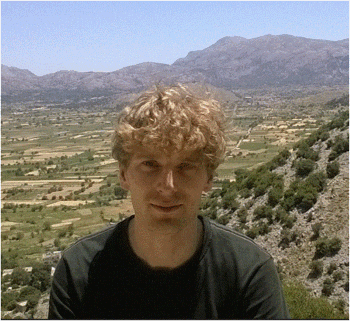Finite element methods for seismic modelling
Sjoerd Geevers is a PhD student in the Mathematics of Computational Science (MACS) group, his supervisor is prof.dr.ir. J.W.W. van der Vegt from the Faculty Electrical Engineering, Mathematics and Computer Science (EWI)
New and more efficient finite element methods for modelling seismic wave propagation are presented and analysed in this dissertation.
Seismic modelling is a useful tool for better understanding seismic behaviour in complex rock structures, but it is also a key aspect of full waveform inversion, which is a powerful technique for imaging the structure of the earth's subsurface. The great advantage of finite element methods over other wave modelling methods, like the popular finite difference method, is that it accurately captures the effect of complex topographies, such as mountainous areas and rough seabeds, without refining the grid resolution. Even so, these methods require a huge amount of computational power and making them more efficient is of great value for many industrial applications. 
The most promising finite element methods for wave propagation modelling are the discontinuous Galerkin method and the mass-lumped finite element method, since they allow for explicit time-stepping. In this dissertation, new and sharp bounds for the time step size and penalty term for the discontinuous Galerkin method are presented. These parameter bounds can be efficiently computed and guarantee stability of the method. It is also shown that these new bounds significantly reduce the number of time steps, and therefore the computation time, compared to other parameter estimates available in literature. Furthermore, it is shown that the new penalty term bound also results in a higher accuracy.
While the stability properties of standard global time-stepping methods are well-known, little is known about the stability of local time-stepping methods. In this dissertation, it is shown that the stability of local time-stepping algorithms is in fact questionable. In particular, it is shown for a basic local time-stepping algorithm that instabilities can always occur, unless the local time step size is applied everywhere. This, however, would turn the algorithm back into a standard time-stepping scheme.
Besides the discontinuous Galerkin method, new mass-lumped finite element methods are also presented in this dissertation. First, a new accuracy condition for the construction of mass-lumped elements is presented. This condition is less restrictive than the condition that has been used for several decades and has so far led to new mass-lumped tetrahedral elements of degrees 2, 3, and 4. The new tetrahedral elements of degree 2 and 3 are shown to be much more efficient than those available in literature, and mass-lumped tetrahedral elements of degree 4 had not been found so far. It is also shown that the new mass-lumped tetrahedral elements result in a much more efficient scheme than the discontinuous Galerkin method for elements of degree 4 or less. New quadrature rules for the stiffness matrix are presented that make the mass-lumped finite element methods even more efficient, since they allow for a faster computation of the stiffness matrix and can handle spatial parameters that vary within the element.
A dispersion analysis is presented in this dissertation that compares the discontinuous Galerkin and mass-lumped finite element methods in terms of accuracy and computation time. The analysis not only shows which method is the most efficient for a given accuracy, but also how many elements per wavelength are required for a given accuracy, and how much the accuracy of the method is affected by element distortions. From the results, it follows that the new degree-2 mass-lumped finite element method is the most efficient for a dispersion error between 0.01 and 0.001, while the new higher-degree mass-lumped finite element methods are more efficient for smaller dispersion errors.
Concluding, the finite element methods and algorithms presented in this dissertation allow for a much faster modelling of seismic waves. This makes the use of finite element methods much more attractive for geophysical applications or other industrial applications that involve solving wave propagation problems
